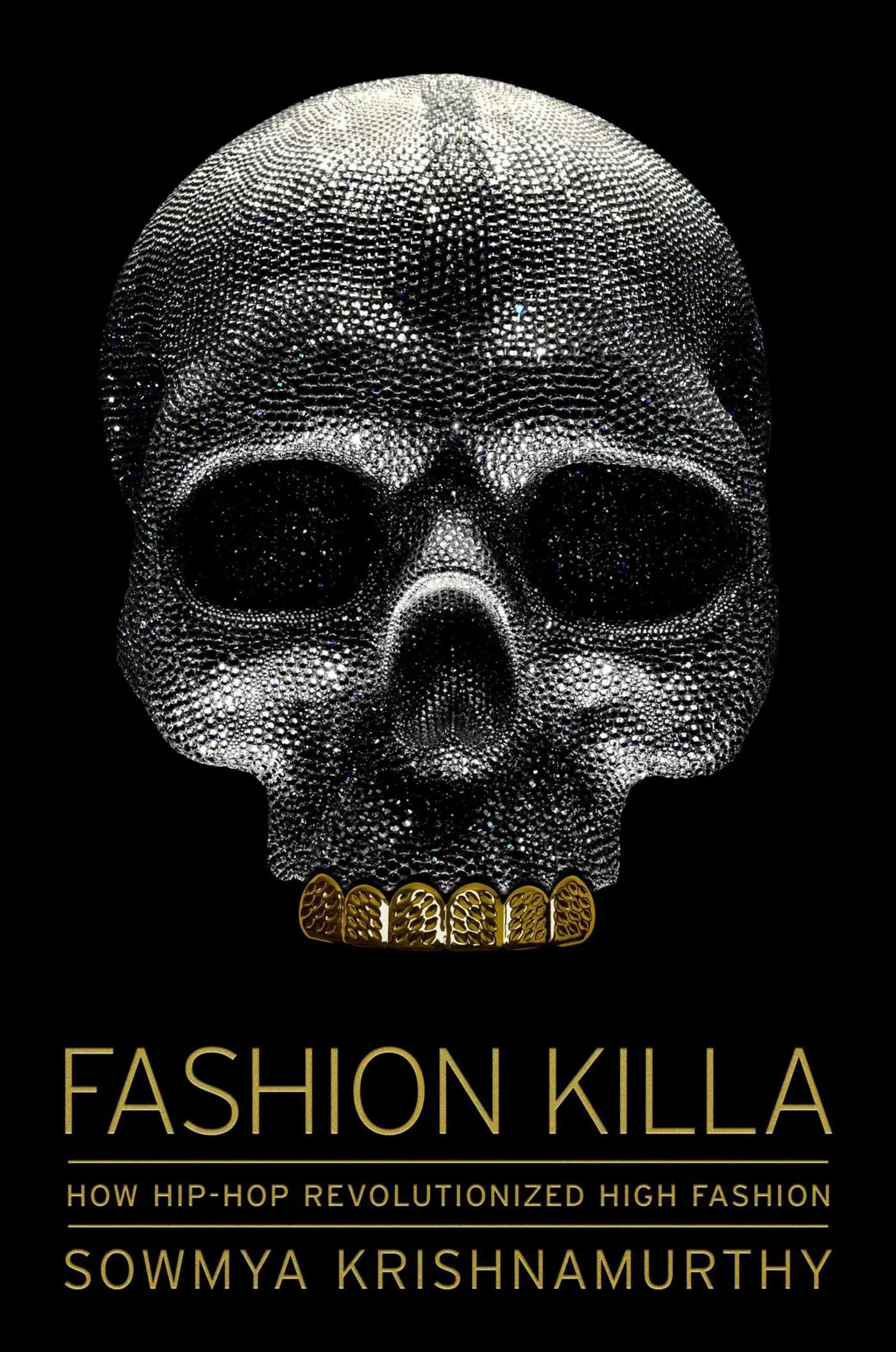High fashion and hip-hop are inseparable nowadays. But the fashion elite didn’t embrace the music genre during its early days. Blame classism and racism. Sowmya Krishnamurthy explains all this in her book Fashion Killa: How Hip-Hop Revolutionized High Fashion (October 10, 2023).
Fashion and hip-hop have been intertwined from day 1, Krishnamurthy tells KCRW, dating back to the famous August 11, 1973 Brooklyn block party where the music genre was born. Clive Campbell — known today as DJ Kool Herc — and his sister Cindy Campbell hosted the event to raise money for her back-to-school wardrobe.
A decade later, fashion designer Dapper Dan made waves in hip-hop. Known as the father of logomania, Krishnamurthy says Dan took established logos and “remixed” them into other pieces of clothing or accessories.
“There might be a snorkel made completely of the Louis Vuitton monogram, and anyone who knows Louis Vuitton knows that they were not doing that at that point. Similarly, he took from what his customers wanted. There might be someone who is a drug dealer, and they want something with bulletproof lining, or they want extra big pockets so they can put their different situations in it. And it was this idea of making something that was custom and really thinking about the consumer in a discerning way.”
The fashion brands were not happy about that, as Krishnamurthy puts it, and Dan became the target of raids over counterfeiting claims. Eventually, fashion houses embraced him, and he started working with brands like Gucci.
A monumental shift came in 1991, as Krishnamurthy explains. German fashion designer Karl Lagerfield released a collection for Chanel that featured chains, nameplate jewelry, and baseball caps, pulling from hip-hop as an influence.
Fashion as self-expression
Krishnamurthy makes the argument that fashion’s roots trace as far back as European sumptuary laws (laws that restricted extravagance), emancipation, and the Civil Rights Movement.
“When we fast forward, we’re getting into the era of Reaganomics and what was going on in New York. It was a very hard time in the city. And for a lot of people, it was this idea of showcasing upward mobility, showcasing success. One way to do that is in your clothing. At the end of the day, no one can see your mortgage. No one can see what’s in your savings. But they can see your outfit.”

“For a lot of people, it was this idea of showcasing upward mobility, showcasing success. One way to do that is in your clothing. At the end of the day, no one can see your mortgage. No one can see what’s in your savings. But they can see your outfit,” says Sowmya Krishnamurthy about the relationship between fashion and self-expression. Photo courtesy of Simon & Schuster.
Typically, when talking about 1990s hip-hop style, Krishnamurthy says a New York-centric lens is used. However, on the West Coast, and in LA specifically, a unique fashion trend emerged: swap meet culture.
“You could go there and get a pack of Hanes t-shirts. You can get your baseball cap and your sneakers customized. Everyone from the biggest ballers to the next-door, everyday person would come out to these big swap meets. And that was such a LA-centric thing.”
Versace’s hip-hop embrace
Krishnamurthy argues that Versace was one of the first luxury brands to embrace celebrities.
“We look at Paris Fashion Week or we look at any front row of a high fashion show, and celebs are sitting there, schmoozing with designers. This is just something that’s very commonplace, but Versace was one of the first to understand and harness the power of celebrities, collaborating with them, wanting to just be around them, and he didn’t discriminate. He might be friends with Tupac, Madonna, and Mike Tyson.”
She points to the brand’s relationship with Tupac Shakur, who’s currently considered a seminal fashion figure. In 1996, Shakur walked in the Versace show in Milan.
“He was so important, helping ascend brands such as Karl Kani and April Walker by wearing their clothes, starring in their early advertisements to later,” she says. “According to people who were close to that project, they said that Gianni [founder of Versace] and Tupac just seemed to be very much like these kindred spirits.”
After Gianni Versace’s death, his sister Donatella followed in his footsteps, nurturing close relationships with artists such as Pharrell Williams and Lil’ Kim, who was the first rapper invited to the Met Gala.
“That just showed this bridge between the two worlds of hip-hop as well as high fashion. And when it’s done well, I think both sides, it feels very much like a synergy versus something … more parasitic or this idea of appropriation, which previously it very much was.”

Author Sowmya Krishnamurthy talks about the influence of rappers, such as Lil’ Kim, on the fashion world in her new book Fashion Killa: How Hip-Hop Revolutionized High Fashion. Credit: David Noles.
Cardi B’s meteoric ascent
The new guard of hip-hop is still embracing fashion, including Cardi B. In 2019, she became the first female rapper to be featured on the cover of Vogue.
“What I love about Cardi is her ascent has been so meteoric. I remember when she was doing little videos for social media and then became a reality star. So to see her now as the darling of couture fashion week is mind-boggling, but it speaks to the fact that she’s fearless.”
She adds, “I love the fact that she can go high-low. She can wear Schiaparelli one day and then Fashion Nova the other day. And I think that speaks to not only her fans, but also to a lot of the industry at large. It’s this idea of just having fun and being yourself.”
This post was originally published on this site be sure to check out more of their content.









